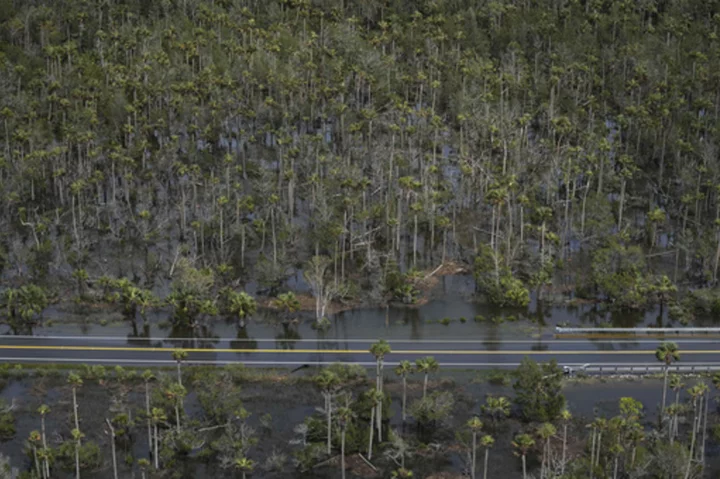ST. PETERSBURG, Fla. (AP) — Florida agriculture losses from Hurricane Idalia are estimated at between $78 million and $371 million, with producers also suffering widespread damage to such infrastructure as irrigation rigs and fences, according to a preliminary report Thursday from the University of Florida.
The Category 3 hurricane came ashore Aug. 30 along Florida's Big Bend region with maximum sustained winds near 125 mph (205 kph), sweeping across rural areas that include crops such as peanuts and cotton as well as cattle, poultry and aquaculture operations.
Predicted losses for livestock are pegged at between $30.1 million and $123.4 million, according to the University of Florida's Institute of Food and Agricultural Sciences report. Estimates for field and row crop losses are between $30.7 million and $93.6 million, with greenhouse and nursery products accounting for between $4.7 million and $68.8 million.
Researchers said the wide ranges in these estimates will narrow as more on-the-ground assessments are completed. The storm's main farm impacts occurred in Dixie, Hamilton, Lafayette, Madison, Suwannee and Taylor counties in an area between the Gulf of Mexico and the Georgia state line. Four people in Florida were killed during the hurricane, according to medical examiner reports to the Florida Department of Law Enforcement.
“Each storm brings different windspeeds and rainfall, and even though our methods allow us to estimate a credible range of losses given certain characteristics of a storm, we still rely on first-hand reports to fully understand the losses and damages caused by a particular storm,” said Xiaohui Qiao, a university research professor and data analyst.
The preliminary loss estimate does not include agricultural infrastructure, but the report found some of the worst losses were to irrigation systems, roofs blown off farm buildings and damage to fence lines. Researchers have difficulty calculating these losses initially using a variety of data sources and modeling because there isn't enough baseline data available from past storms.
“However, we do believe that Idalia will help us gather critical information to build this baseline data for future assessments,” said Christa Court, assistant professor in the university's Food and Resource Economics Department.
Also Thursday, Agriculture Commissioner Wilton Simpson announced an assistance program targeted at repair or replacement of existing irrigation systems. The program offers a reimbursement rate of 75% up to a maximum of $150,000 per producer or entity except those covered fully by insurance, according to a news release.
Simpson said the program will “support our hardest-hit growers who lost much of their 2023 crop and are now looking for ways to repair or replace hundreds of irrigation systems ahead of next growing season.”
The university's report is one of several ways federal and state agencies determine how to distribute response and assistance in natural disasters such as hurricanes. A final report will be released in the coming weeks that will include county-by-county agricultural loss estimates.
Florida agriculture and related industries such as processing accounted for more than $270 billion in sales revenue and supported some 2 million jobs in 2022, the University of Florida estimated. Only the tourism industry is larger in Florida.

